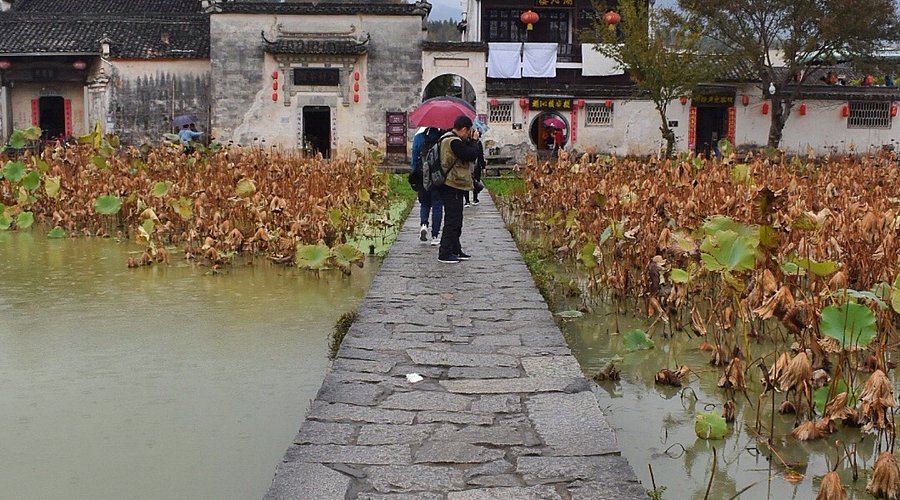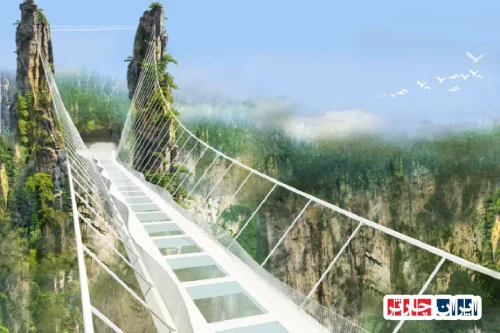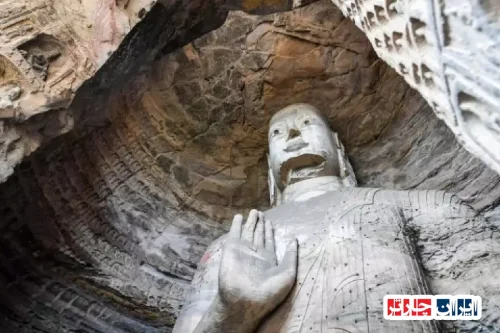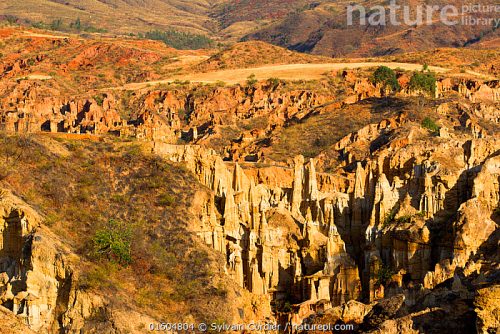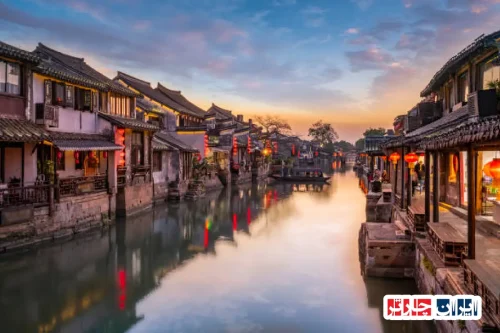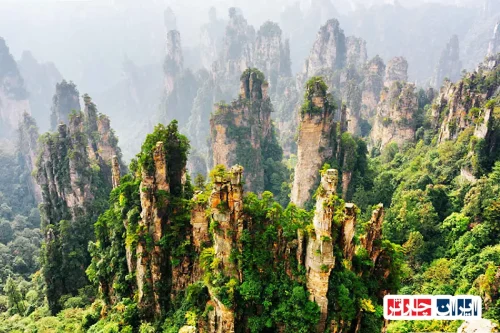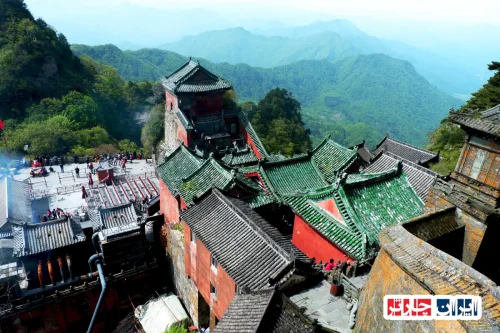Discover the Rich Heritage of Hongcun Ancient Village Anhui Province China
Hongcun Ancient Village in Anhui Province China stands as a timeless testament to traditional Chinese architecture and culture, captivating visitors with its unique layout, historic significance, and breathtaking scenery. This ancient village, often referred to as a living museum, showcases the harmonious integration of natural landscapes and human craftsmanship, making it a must-visit destination for travelers seeking to explore China’s rich cultural heritage. The village’s intricate network of waterways, traditional Hui-style houses, and well-preserved ancient structures reflect centuries of history and craftsmanship, offering a glimpse into the lifestyle of ancient Chinese communities. Visitors can stroll through narrow alleys, admire the elegant courtyards, and experience the authentic atmosphere that has been maintained for generations. The beauty of Hongcun is not only in its architecture but also in its cultural traditions, local crafts, and vibrant festivals that continue to thrive today. Recognized as a UNESCO World Heritage Site, Hongcun Ancient Village embodies the essence of Chinese history and artistry, making it an invaluable cultural treasure in Anhui Province China. Whether you are a history enthusiast, a photographer, or a curious traveler, exploring Hongcun provides an immersive experience into the heart of traditional China, where every corner tells a story of ancient wisdom and artistic excellence.
For more information about this remarkable destination, visit Hongcun Ancient Village-Iran Charter.

Discovering the Rich History of Hongcun Ancient Village in Anhui Province, China
Hongcun Ancient Village in Anhui Province, China, stands as a testament to centuries of Chinese history and culture. Established over 900 years ago during the Song Dynasty, this historic village has preserved its traditional architecture, intricate waterways, and cultural heritage, making it a must-visit destination for travelers seeking authentic Chinese history. Its strategic location amidst lush landscapes and mountain ranges has contributed to its development as a vibrant hub of commerce and culture throughout the ages. Visitors can explore ancient houses, temples, and bridges that reflect the craftsmanship and artistry of ancient China, offering a glimpse into the lifestyle of past generations. The village’s history is intertwined with the rise and fall of dynasties, trade routes, and regional developments, making it a living museum of Chinese civilization. Recognized as a UNESCO World Heritage Site, Hongcun’s historical significance continues to attract scholars, historians, and tourists from around the world, eager to experience its timeless charm and cultural depth.
Architectural Marvels and Traditional Artistry in Hongcun Village, Anhui
Hongcun Ancient Village in Anhui Province is renowned for its exquisite traditional architecture that exemplifies classical Chinese design. The village’s layout is based on principles of Feng Shui, with a central pond symbolizing the sky and surrounding houses representing the earth, creating harmony and balance. The white-walled houses with dark-tiled roofs, wooden carvings, and intricate lattice windows showcase the craftsmanship of ancient Chinese artisans. Artisans in Hongcun have preserved traditional techniques in woodwork, painting, and pottery, which are evident in the detailed decorations and artworks adorning the buildings. These artistic elements tell stories of local legends, cultural beliefs, and historical events, serving as a cultural archive passed down through generations. The craftsmanship extends to the decorative bridges, ancestral halls, and courtyards, each reflecting the aesthetic values and spiritual beliefs of the region. Visitors can admire the harmonious blend of functionality and artistry that defines Hongcun’s architectural identity, making it a living showcase of Chinese cultural heritage.
Ingenious Water Management and Urban Planning in Hongcun Village, Anhui
The unique water system of Hongcun Ancient Village in Anhui Province demonstrates advanced ancient Chinese engineering. The village’s layout incorporates a network of canals, ponds, and bridges designed to manage water flow efficiently and prevent flooding. The central crescent-shaped pond not only enhances the aesthetic appeal but also acts as a water reservoir, supporting the daily life of residents. The bridges, often made of stone, connect different parts of the village, facilitating movement and trade. This water management system reflects the wisdom of traditional Chinese urban planning, emphasizing harmony with nature and sustainability. The waterways also serve as a vital transportation route, enabling the movement of goods and people within the village. The integration of water features into the urban fabric highlights the importance of ecological balance and resource management in ancient Chinese civilization. Today, these water systems continue to function effectively, preserving the village’s historic landscape and supporting its cultural identity.
Living Traditions and Cultural Practices in Hongcun Village, Anhui
The residents of Hongcun Ancient Village in Anhui Province maintain a rich array of traditional customs and cultural practices that have been passed down for generations. Festivals, such as the Lantern Festival and Mid-Autumn Festival, are celebrated with vibrant performances, traditional music, and local cuisine, reflecting the community’s deep-rooted cultural identity. Ancestor worship and ancestral rites are still observed in local temples and family courtyards, emphasizing filial piety and respect for history. Handicrafts like paper-cutting, embroidery, and calligraphy are actively practiced, showcasing the artistic talents of local artisans. These traditions foster a strong sense of community and cultural continuity, connecting the present with the past. Despite modernization, many families continue to uphold these customs, ensuring that Hongcun remains a living cultural heritage site. Visitors can participate in local ceremonies and learn about the cultural significance behind each tradition, gaining a deeper understanding of Chinese cultural values.
Hollywood and International Films Set in Hongcun Village, Anhui
Hongcun Ancient Village in Anhui Province has gained international fame as a picturesque filming location for numerous movies and TV dramas. Its authentic architecture and scenic landscapes have made it an ideal backdrop for stories set in ancient China. Films such as “Crouching Tiger, Hidden Dragon” and other international productions have utilized Hongcun’s stunning scenery to depict historical settings, contributing to its global recognition. The village’s well-preserved traditional houses, stone bridges, and tranquil waterways provide filmmakers with an authentic environment that enhances storytelling. This exposure has increased tourism, drawing film enthusiasts and tourists eager to see the real-life scenery of their favorite movies. The film industry’s interest in Hongcun has also encouraged efforts to preserve its cultural and architectural integrity, ensuring that its cinematic appeal remains intact for future generations. As a result, Hongcun continues to serve as a bridge between Chinese heritage and global entertainment industries.
Natural Beauty and Scenic Attractions Around Hongcun, Anhui
The surrounding landscape of Hongcun Ancient Village in Anhui Province offers breathtaking natural scenery that complements its historic charm. Nestled amidst lush green mountains and terraced fields, the area provides a tranquil escape into nature. The nearby Huangshan Mountain, a UNESCO World Heritage Site, offers spectacular views, unique granite peaks, and sea of clouds, attracting hikers and nature lovers worldwide. The region’s rivers, waterfalls, and forests create a diverse ecosystem that supports local biodiversity. Seasonal changes bring different visual delights: blooming flowers in spring, lush greenery in summer, colorful foliage in autumn, and snow-capped peaks in winter. These natural attractions not only enhance the aesthetic appeal of Hongcun but also support eco-tourism and outdoor activities. Visitors can enjoy scenic walks, photography, and cultural experiences amid pristine landscapes, making the region a perfect blend of history and nature.
Best Times to Visit Hongcun Ancient Village, Anhui and Travel Tips
The optimal time to explore Hongcun Ancient Village in Anhui Province is during spring (March to May) and autumn (September to November), when the weather is mild and the scenery is at its most vibrant. Spring brings blooming flowers and fresh greenery, while autumn features colorful foliage that enhances the village’s picturesque setting. Summer can be hot and humid, but the lush landscapes and nearby mountain scenery provide a refreshing escape. Winter offers a different charm with snow-covered rooftops and peaceful surroundings, ideal for photography enthusiasts. To ensure a smooth visit, plan your trip ahead, considering transportation options and accommodation availability. Wearing comfortable shoes and appropriate clothing for the season will enhance your experience. Local guides can offer insightful tours, enriching your understanding of Hongcun’s history and culture. Remember to respect local customs and preserve the environment during your visit.
Practical Guide for Visiting Hongcun Village, Anhui: Transportation and Cultural Tips
Getting to Hongcun Ancient Village in Anhui Province is convenient via major cities like Huangshan or Hefei, with options including buses, private transfers, or guided tours. Once there, exploring the village on foot is the best way to appreciate its architecture and waterways. Renting a bicycle or electric scooter can also be a fun and efficient way to navigate the area. It is advisable to arrive early in the day to avoid crowds and fully enjoy the tranquility of the village. When visiting, respect local traditions, especially during festivals or religious ceremonies, and seek permission before taking photographs of residents or private property. Learning a few basic phrases in Mandarin can enhance interactions with local residents. Carrying a map or using a mobile app with offline maps can help you discover hidden corners and historical sites. Proper planning ensures an immersive and respectful experience, allowing you to appreciate the cultural richness of Hongcun fully.
Unique Souvenirs and Handicrafts from Hongcun, Anhui
Hongcun Ancient Village is famous for its traditional crafts and local products that reflect its cultural heritage. Handcrafted items such as paper-cuttings, embroidered textiles, and wooden carvings make excellent souvenirs. These crafts often depict local legends, symbols, and historical motifs, serving as tangible memories of your visit. Artisans in Hongcun continue to produce these traditional artworks using age-old techniques, ensuring the preservation of cultural skills. Visitors can purchase these crafts directly from local markets or workshops, supporting the community and promoting cultural continuity. Additionally, regional specialties like Anhui-style tea, herbal medicines, and local delicacies are popular gifts. Engaging with artisans during your visit provides insight into the craftsmanship and cultural stories behind each item. These authentic souvenirs serve as meaningful keepsakes and help sustain the traditional arts of Hongcun for future generations.
Preserving the Heritage of Hongcun Village in Anhui for Future Generations
The preservation of Hongcun Ancient Village in Anhui Province is vital for maintaining its cultural and historical significance. Efforts by local authorities, conservation organizations, and the community focus on protecting the traditional architecture, waterways, and cultural practices. Implementing sustainable tourism practices ensures that visitor numbers do not threaten the integrity of the site. Educational programs raise awareness among residents and tourists about the importance of preserving this cultural treasure. Modern technology, such as digital archiving and structural reinforcement, supports conservation efforts. Community involvement and responsible tourism are key to safeguarding Hongcun’s heritage while allowing visitors to experience its beauty. Continued investment and international cooperation will help ensure that Hongcun remains a vibrant example of Chinese history and culture, inspiring future generations to appreciate and protect their cultural legacy.
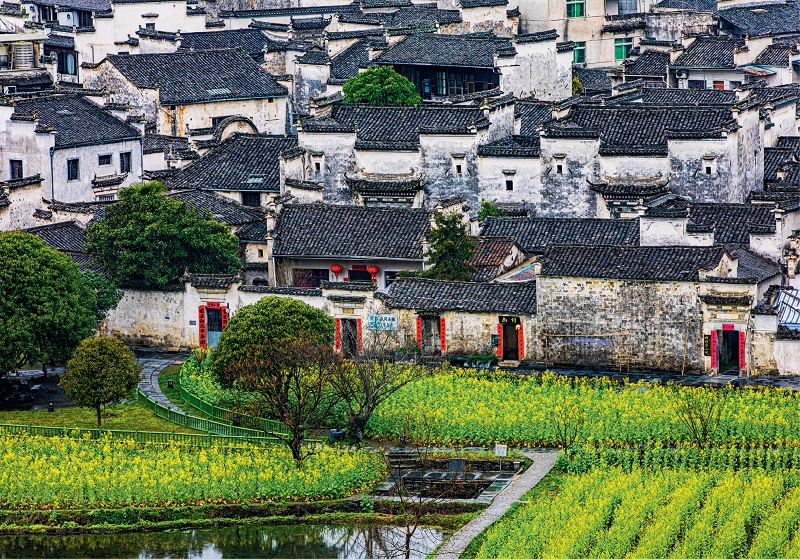
Frequently Asked Questions about Hongcun Ancient Village in Anhui
- What is the historical significance of Hongcun Village?
- Hongcun Village, established over 900 years ago during the Song Dynasty, is a UNESCO World Heritage Site that showcases centuries of Chinese history and culture. Its traditional architecture, waterways, and cultural practices reflect the evolution of regional civilization, making it a living museum of Chinese heritage.
- How does the layout of Hongcun Village reflect Feng Shui principles?
- The village’s design is based on Feng Shui, with a central crescent-shaped pond symbolizing the sky and surrounding houses representing the earth. This harmonious arrangement promotes balance, prosperity, and good fortune for residents and visitors alike.
- What are the main architectural features of Hongcun?
- Hongcun is renowned for its white-walled houses with dark tiled roofs, intricate wooden carvings, lattice windows, and decorative bridges. These elements exemplify classical Chinese craftsmanship and aesthetic values, preserving traditional building techniques.
- How does Hongcun manage its water system?
- The village features a sophisticated network of canals, ponds, and stone bridges designed for efficient water management. The central pond acts as a reservoir, supporting daily life and preventing flooding, demonstrating ancient Chinese engineering ingenuity.
- What cultural traditions are still practiced in Hongcun?
- Residents celebrate festivals like Lantern Festival and Mid-Autumn Festival with performances, music, and local cuisine. Ancestor worship, traditional handicrafts such as paper-cutting, embroidery, and calligraphy are actively preserved, maintaining cultural continuity.
- Why is Hongcun popular in international cinema?
- Its authentic architecture and scenic landscapes have made it a favored filming location for movies like “Crouching Tiger, Hidden Dragon” and other international productions, boosting its global recognition and tourism.
- What natural attractions surround Hongcun?
- The village is nestled among lush mountains and near Huangshan Mountain, a UNESCO site known for its granite peaks and sea of clouds. The region’s rivers, waterfalls, and forests offer diverse ecosystems and scenic views year-round.
- When is the best time to visit Hongcun?
- The ideal seasons are spring (March-May) and autumn (September-November), when weather is mild and landscapes are vibrant. Summer is warm and lush, while winter offers snow-covered scenery perfect for photography.
- How can visitors reach Hongcun?
- Travelers can arrive via major cities like Huangshan or Hefei by bus, car, or guided tours. Exploring on foot, renting bicycles, or electric scooters are popular ways to navigate the village and enjoy its sights.
- What souvenirs can visitors buy in Hongcun?
- Traditional crafts such as paper-cuttings, embroidered textiles, wooden carvings, and regional specialties like Anhui tea and herbal medicines are popular keepsakes that support local artisans and preserve cultural arts.
- How does Hongcun preserve its cultural heritage?
- Conservation efforts involve local authorities, community participation, and sustainable tourism practices. Modern technology aids preservation, while educational programs raise awareness about maintaining the village’s historical and cultural integrity.
- Are there any tips for first-time visitors?
- Arrive early to avoid crowds, wear comfortable shoes, and consider hiring a local guide for deeper insights. Respect local customs, especially during festivals, and carry a map or offline app to explore hidden spots.
- What are some unique features of Hongcun’s architecture?
- Beyond its traditional houses, Hongcun features decorative bridges, ancestral halls, and courtyards that showcase craftsmanship and spiritual symbolism, reflecting the region’s aesthetic and cultural values.
- Can I participate in local cultural activities?
- Yes, visitors are often welcomed to join festivals, craft workshops, and ceremonies, providing an immersive experience into Hongcun’s living traditions and community life.
- What efforts are being made to protect Hongcun’s environment?
- Environmental preservation includes regulating tourist numbers, maintaining water quality, and promoting eco-friendly practices among visitors and residents to ensure the sustainability of its natural and cultural landscape.
